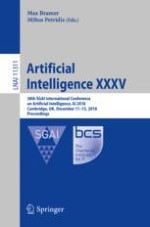2018 | OriginalPaper | Chapter
Enhancing Human Decision Making for Workforce Optimisation Using a Stacked Auto Encoder Based Hybrid Genetic Algorithm
Authors : R. Chimatapu, H. Hagras, A. J. Starkey, G. Owusu
Published in: Artificial Intelligence XXXV
Publisher: Springer International Publishing
Activate our intelligent search to find suitable subject content or patents.
Select sections of text to find matching patents with Artificial Intelligence. powered by
Select sections of text to find additional relevant content using AI-assisted search. powered by
